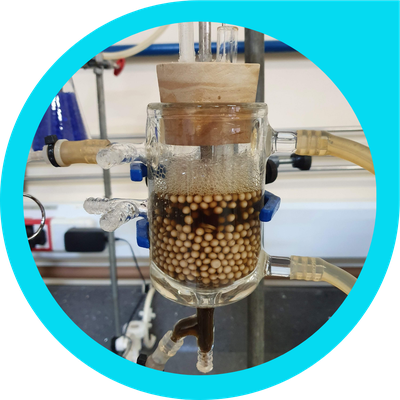2G Ethanol
Development of Scalable Technology for Consolidated Bioprocessing

The development of integrated technologies and the full utilization of plant biomass are crucial for establishing a global energy matrix based on renewable sources. The economic viability of biorefineries depends both on the advancement of emerging technologies, such as Consolidated Bioprocessing (CBP), and on the production of a portfolio of higher-value products, in addition to commodities like bioethanol. In CBP, enzyme production, biomass hydrolysis, and sugar fermentation occur in a single reactor, with the main challenge being the scale-up of this technology to industrial levels through environmentally sustainable and cost-effective processes.
At LaFaC, two alternative CBP technologies are being explored. In the SHIF process (Simultaneous Hydrolysis, Isomerization, and Fermentation), industrial S. cerevisiae yeast (non-recombinant) is used along with commercial enzyme cocktails to enable the production of ethanol and xylitol from hemicellulose and cellolignin hydrolysates, generated via hydrothermal pretreatment of sugarcane bagasse or straw, or malt bagasse from the brewing industry. In the SHF process (Simultaneous Hydrolysis and Fermentation), recombinant S. cerevisiae strains capable of secreting seven hydrolytic enzymes are employed to produce ethanol and enzymes, also from hemicellulose and cellolignin hydrolysates derived from sugarcane or brewing residues.
Laboratory studies focus on developing bioreactors and efficient cultivation strategies for conducting SHIF or SHF in industrial media containing high sugar content, aiming to achieve high product concentrations using both free and immobilized cells at high loads. Industrial media are formulated with hemicellulose and cellolignin hydrolysates and supplemented with sugarcane molasses, combining low cost with integrated utilization of the C5 and C6 fractions of biomass. Different operation modes (repeated batch and continuous) in combination with innovative reactor designs (for immobilized cells or enzymes) are evaluated under conditions similar to those used industrially, contributing to the potential exploitation of various agro-industrial by-products through CBP implementation in biorefineries.
 (2).png)